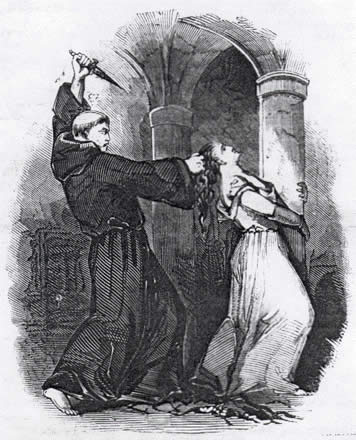 The Goths, as recounted by a Gothic historian named Jordanes (mid 6th Century AD), were a Teutonic-Germanic people whose original homeland was, according to this same Jordanes, in southern Sweden. At that time, this half-barbaric band was ruled by a king called Berig. It was King Berig who led his people south to the shores of the Baltic Sea, where they split up into two groups: the Ostrogoths (or Eastern Goths), and the Visigoths (Western Goths).
The Goths, as recounted by a Gothic historian named Jordanes (mid 6th Century AD), were a Teutonic-Germanic people whose original homeland was, according to this same Jordanes, in southern Sweden. At that time, this half-barbaric band was ruled by a king called Berig. It was King Berig who led his people south to the shores of the Baltic Sea, where they split up into two groups: the Ostrogoths (or Eastern Goths), and the Visigoths (Western Goths).
Also according to Jordanes, the Goths reached the pinnacle of their power around the 5th Century AD, when they conquered Rome and most of Spain.
The original Goths — and this is important — have no real connection with what that word eventually came to mean.
It was many centuries later, you see, that a certain non-classical style of architecture emerged. Because this style of architecture wasn’t classical, it was pejoratively termed Gothic, which meant “barbaric.”
Gothic literature came about centuries after this and is so called because a great number of these novels are set in Gothic monasteries and Gothic abbeys.
That is how the genre of Gothic literature came to be.
Setting is the crucial component to Gothic fiction. As Ann Blaisde Tracy wrote in her 1981 book The Gothic Novel, this literature depicts “a fallen world,” a world of ruin and desuetude, dilapidation and disrepair, death, decay — a vital and thriving world no more.
The English author Horace Walpole is generally credited with writing the first Gothic novel, and that novel, written in 1764, is called The Castle of Otranto.
Though she didn’t originate Gothic literate, the enigmatic Anne Radcliffe (1764 – 1823) is undoubtedly that genre’s greatest early popularizer, and her Gothic novel The Mysteries of Udolopho was immediately parodied by the likes of Jane Austin and Thomas Love Peacock, among others.
The early Gothic novels are, however, diffuse and stylistically difficult to our modern-day eyes and ears, the pace often bogging down in its baroque prose. Among the best of the early Gothic novels is Melmoth The Wanderer, by Charles Robert Maturin (whom Honoré de Balzac, Charles Baudelaire, Oscar Wilde, Victor Hugo and Lord Byron all admired for his rather Byronic book).
Yet for all its difficulty now, Gothic literature employed wildly intriguing plot devices which at the time were quite new — secret closets, mysterious manuscripts, ghostly abbeys, unspeakable deeds — so that at its best, there is an undeniable sense of strangeness and fascination that pervades Gothic literature. That is the reason some of the world’s greatest writers have used Gothic literature as a model for their own non-Gothic novels.
Happy Halloween.




















